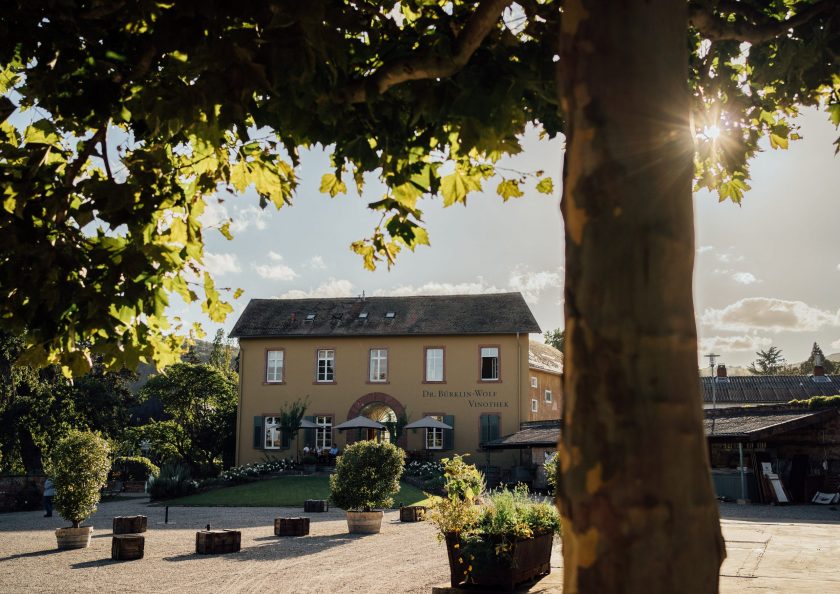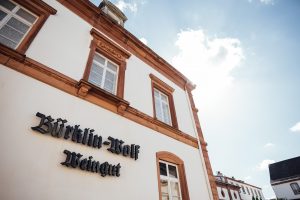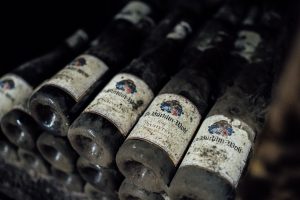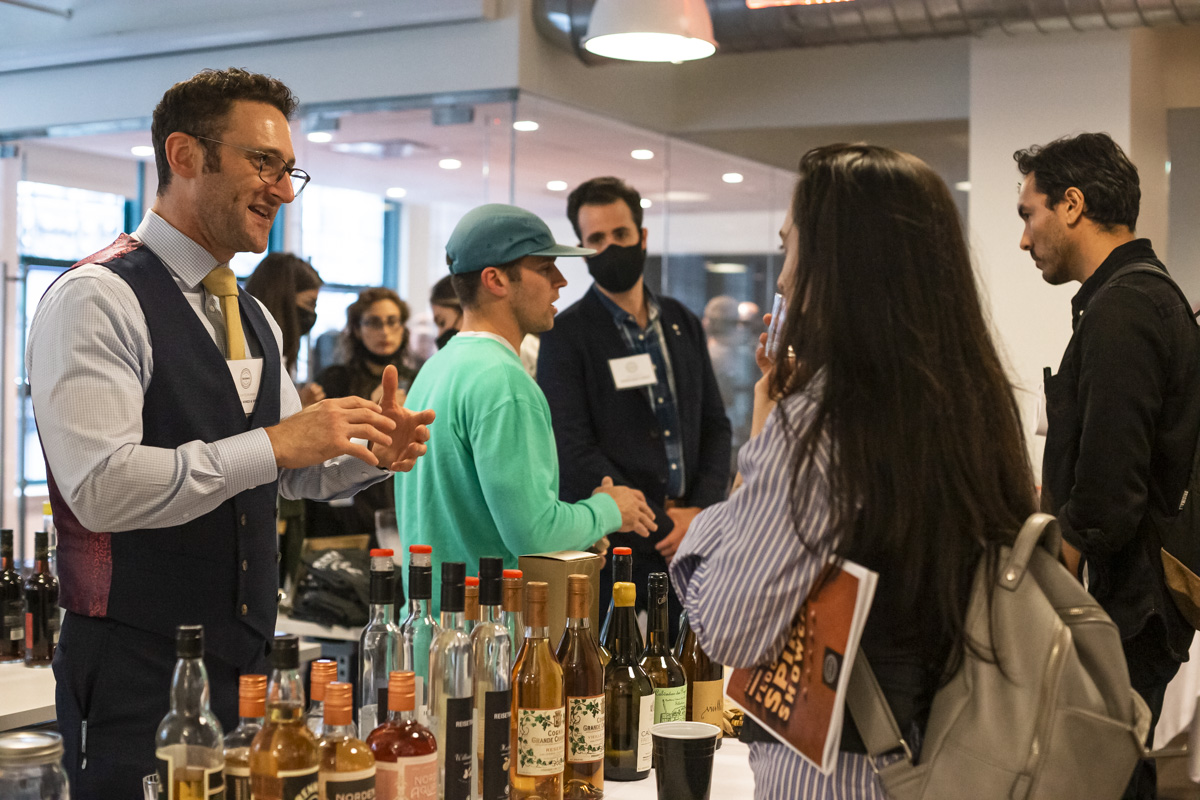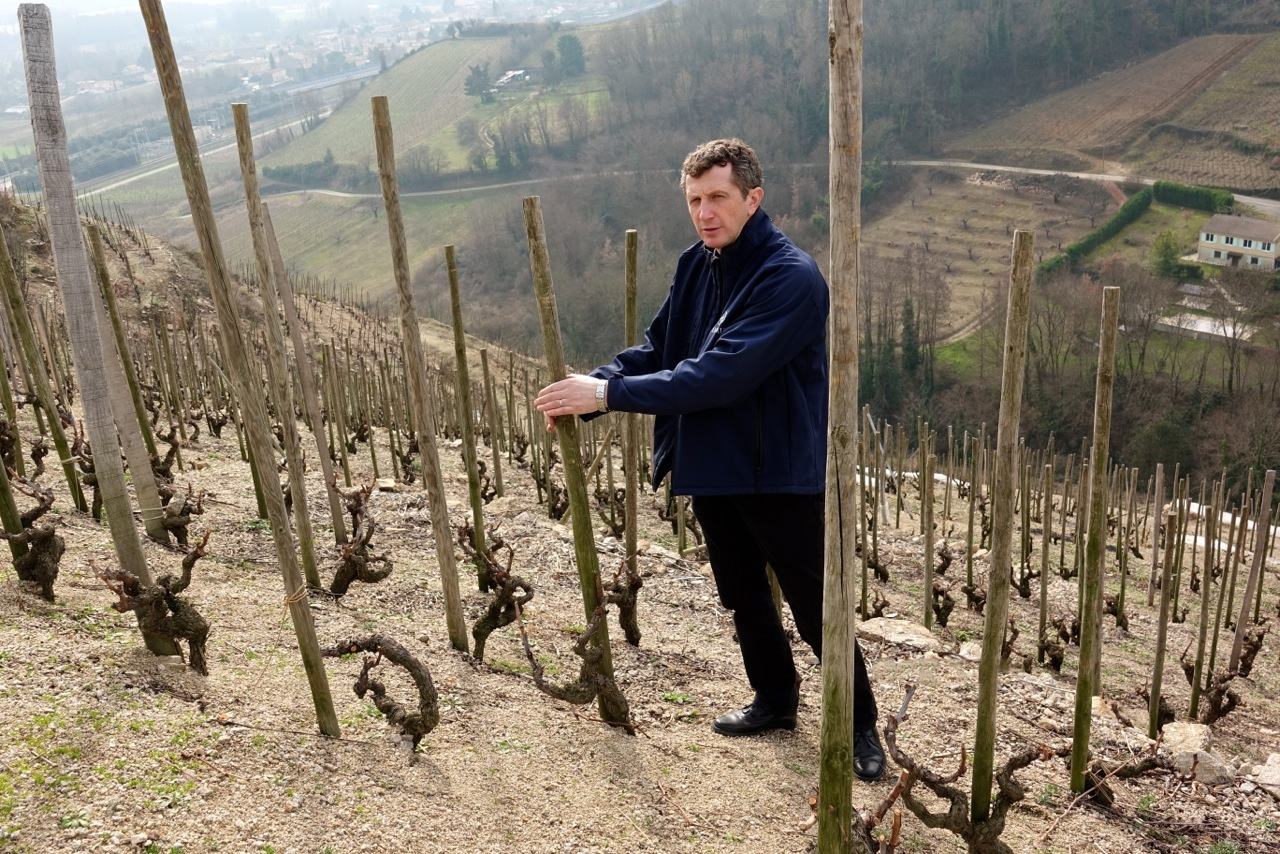Dr. Bürklin-Wolf is one of the crown jewels of German wine culture.
We are pleased to announce our partnership with Dr. Bürklin-Wolf and are proud to be working with the extraordinarily talented team at this estate.
Located in Wachenheim, this estate was one of the “Three Bs of the Pfalz”; historically Basserman-Jordan, von Buhl, and Bürklin-Wolf were the most important estates in the Pfalz. Today, Dr. Bürklin-Wolf is one of the finest estates in all of Germany, a certified organic, biodynamic, and family-owned winery with a 400-year history.
Dr. Bürklin-Wolf is owned by Bettina Bürklin-von Guradze, who took over the estate from her father in 1990. Over the next fifteen years, she took steps to improve every aspect of the estate. In 2005, under Ms. Bürklin-von Guradze’s guidance, the estate became the first producer in Germany to be certified by Biodyvin, the biodynamic certifier for Leflaive, Domaine de la Romanée-Conti, and 175 other top growers in France, Italy, Spain, Portugal, and Switzerland. The winery has both a deep history and a reputation for innovation. Today, Bürklin-Wolf produces only handpicked, estate-grown wines on 86 hectares, with 15 different top vineyard sites. The idea is to focus on the raw material, health, and balance in the vineyards using biodynamic methods to produce wines of outstanding quality.
THE TEAM
Managing Director Steffen Brahner has been at the helm for thirteen years now, guiding the team at Dr. Bürklin-Wolf. Steffen’s focus since arriving at the winery has been on origin and classification. The estate was already ahead in this regard, releasing Reiterpfad as its first Grand Cru release in 1994, followed by the Premier Cru release of Goldbächel in 1996. The VDP followed in 2000 with the release of the first Grosses Gewächs and introduced the Erste Lage classification in 2012. Steffen explains that this was an important path to continue down; when he started there were just two village wines. “It was very important to expand the range to focus on wines of origin and to tell the full story of the estate,” says Steffen. Today, the classification system that was first developed in the 1990s is continued.
Steffen guided the winery away from purchasing fruit, stopping fully in 2008, to focus the estate on the vineyards they held in ownership. “We always had excellent cellar masters,” said Steffen. Beloved winemaker Fritz Knorr, the 4th generation of his family to make wine at Bürklin, Ms. Bürklin-von Guradze, and Steffen recognized the talent of a young Italian trainee named Nicola Libelli. They offered him a position after his internship and graduation from Gesisenheim in 2011. When Fritz Knorr passed away suddenly in 2012, Steffen and Ms. Bürklin-von Guradze trusted young Nicola with one of the most important positions in the winery, appointing him cellar master.
“With this transition”, Steffen said, “our attention turned to improving the biodynamic viticulture and program at the estate”. In 2018, Jan Hock was appointed as “Chef de Culture”, responsible for the 86 hectares of biodynamically-farmed vineyards. Jan spent most of his life in Deidesheim, before enrolling at Geisenheim University in the Rheingau and graduating the year after Nicola. “Jan and Nicola are best friends,” says Steffen “and Jan was the right fit”. Jan worked with Bernhard Ott before coming back to the Pfalz, working at another biodynamic estate in the town of Bad Dürkheim, before his appointment at Bürklin-Wolf in late 2018.
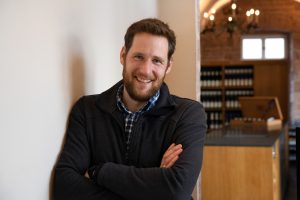
Nicola and Jan are young but extremely passionate and driven. They studied together at Geisenheim and have great chemistry. They are great friends who recognize that they have the shared responsibility of the legacy of one of the finest estates in Germany in their hands; they are dedicated to making the best possible wines but also to continual improvement, working together to reach their goals. Jan is looking at biodynamics as a way to not only grow the very best fruit possible, but the make the vineyards in better harmony to adjust to climactic variances in recent vintages.
“Before, maybe you had the vineyard team on one side and the cellar team on the other. Now with Jan here, there is more communication between us and at the end of the day, it’s all about the team,” Nicola says in the interview which can be viewed below. You get the feeling that these two young men have a great time working together, though they understand the magnitude and responsibility that comes with managing this historic estate.
THE PHILOSOPHY
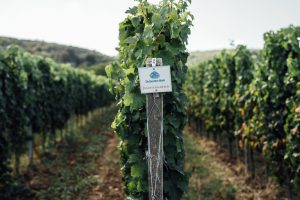
One of the great challenges for any winery is deciding when to pick in each parcel. As legendary winemaker Helmut Dönnhoff says, “when you cut the fruit from the vine, what you are holding in your hand is the highest level of quality. The trick of winemaking is to lose as little quality as possible from the raw material on the way from fruit to wine”.
Like many great estates, after harvest, always by hand, the winemaking is very traditional and uncomplicated. Natural fermentation without utilizing pied de cuve is the norm at this address.
“When the grapes arrive, it’s quite a simple winemaking. We use always whole bunch pressing, followed by sedimentation without any clarifying agents. The must is quite cloudy, but this is what we want. Anything that we are getting from the outside, which is good, we want to keep in the wines. Then it’s pumping over and waiting for the fermentation. Like this year, it’s taking a little while, so you have to keep calm. But, I mean, I never heard that the juice is gonna stay juice forever. So, one day, they are going to ferment.” Nicola says with a laugh.
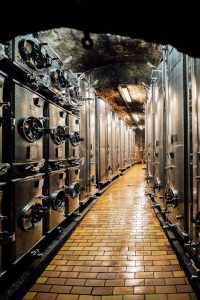
For Nicola and Jan, working together as friends and knowing each other for years before working together has given them an incredible advantage.
“It’s working really well and, since Jan is has been here for three years now, we see that. You have to imagine that Bürklin is a big winery. I mean, it’s 86 hectares, it’s not a tiny one. Before you had the tendency of the vineyard team and you had the cellar team. And the idea was really good, but sometimes there was a lack of communication. What happens now, we are talking the whole year, driving through the vineyards, and deciding everything together. And you see the vitality, the energy of the wines is growing. It’s all about the team at the end of the day, you know?” Nicola says.
The Premier and Grand Cru wines from each of the fifteen different sites are fermented naturally in large old oak casks while both the dry (Estate Riesling Trocken) and Off-Dry (Hommage à Luise Riesling) are fermented in a mix of stainless steel and old oak casks. These two entry-level wines are classic in the very best sense and wonderful everyday wines. Critic David Schildknecht remarked that the Estate Riesling Trocken from this domain “is often the very best wine of its type in Germany, each vintage”.
IN THE CELLAR
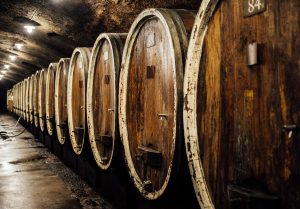 In the cellar, for Riesling, there are only large stück, from different coopers – Stockinger from Austria, Mattern, from Pfalz, and Assmann from Franconia. The casks are produced with very thick staves and range in size from 600-3000 liters. After natural fermentation, the wines stay on the lees for a period of time, depending on the vineyard site and development. The cellar is historic, with original sections from the 17th century; it’s also very humid, making oxygen exchange and evaporation in the wines quite slow. The single-site wines generally spend six months to a year in cask, though there is no set timeframe. Generally, the Grand Cru wines are released in the spring of the second year after harvest.
In the cellar, for Riesling, there are only large stück, from different coopers – Stockinger from Austria, Mattern, from Pfalz, and Assmann from Franconia. The casks are produced with very thick staves and range in size from 600-3000 liters. After natural fermentation, the wines stay on the lees for a period of time, depending on the vineyard site and development. The cellar is historic, with original sections from the 17th century; it’s also very humid, making oxygen exchange and evaporation in the wines quite slow. The single-site wines generally spend six months to a year in cask, though there is no set timeframe. Generally, the Grand Cru wines are released in the spring of the second year after harvest.
After over a decade at Bürklin, Nicola and his team understand the differences in both the individual casks as well as the different climatic zones of the cellar.
“We know our barrels. So, we know that this part of the cellar is good for fermenting Grand Crus. Or when we have a slightly newer barrel – five, six, seven years old, we know that we will have a bit of Gaisböhl inside or a bit of Deidesheimer fruit. We think that the character of the fruit can match with this very super-mini wood touch,” says Nicola. “Forst is always super sensitive,” Says Jan, “So, we try to keep this always with the oldest casks” finishes Nicola.
The two also feel lucky to have entered positions at a winery that was already at the forefront of viticultural innovation, as well as with incredible holdings in some of Germany’s most valuable and lauded vineyard sites:
We love our premier crus because there we have many possibilities, like Böhlig, one of my favorite wines every year. When you taste it, it is like limestone pure and you can see this when you walk inside the vineyard. We like to try many wines [. . . ] sometimes you see that everything that comes from volcanic soil or limestone soil or a sandstone soil, we can see some parallels with growers within the region, but also outside the region. This is what we love.
It is this goal, to show the character of place for each site clearly, with uncompromising attention paid in the vineyards and cellar, that sets this winery apart. These are masterful, terroir-driven wines of the highest echelon. We are thrilled to be working with this historic and innovative estate as Dr. Bürklin-Wolf’s National Importer to the United States.
AN INTERVIEW WITH JAN & NIC
THE WINES
(November Arrival)

DR. BÜRKLIN-WOLF ESTATE RIESLING TROCKEN
The Estate Riesling Trocken comes from sandstone vineyards on the foothills of the Pfalz mountains, almost exclusively from the village of Wachenheim. These south-facing slopes give the wine a warm, ripe character with a backbone of minerality and fresh, lifted acidity. The Estate Riesling is fermented in a mixture of stainless steel and large oak casks and matured for 4-6 months before bottling in Spring.

DR. BÜRKLIN-WOLF WACHENHEIM RIESLING TROCKEN
This Village Riesling is a blend of classified vineyards in Wachenheim, from red and yellow sandstone soils. The fruit here is picked a bit earlier than the fruit that goes into the Premier and Grand Cru wines, though the farming is, as always, exactly the same. For the village wines, the fruit is pressed whole-cluster before spontaneous fermentation in steel. After fermentation, the wines are aged in 2400 liter oak casks before bottling in early summer.

DR. BÜRKLIN-WOLF RUPERTSBERG RIESLING TROCKEN
The Ruppertsberg Village wine is a blend of classified vineyards from predominantly clay and sandstone soils. The fruit here is harvested slightly earlier than the single-vineyard designate wines and is blended to be an expression of the overall character of this village rather than an individual vineyard. For the village wines, the fruit is pressed whole-cluster before spontaneous fermentation in steel. After fermentation, the wines are aged in 2400 liter oak casks before bottling in early summer.

DR. BÜRKLIN-WOLF WACHENHEIM RIESLING “R” TROCKEN
The Wachenheimer Riesling “R” stands for Reserve. Similar to the more current vintage, this is a blend of classified vineyards in Wachenheim, from red and yellow sandstone soils. For this wine, however, fermentation takes place in 2400 liter casks and is held on the full less for three years before bottling, giving a very different character to the wine, more savory and mineral than fruit-driven.

DR. BÜRKLIN-WOLF WACHENHEIMER BÖHLIG PREMIER CRU RIESLING TROCKEN
The Böhlig vineyard in Wachenheim is 4.94 ha in size and is one of the few vineyards in the Mittelhaardt with weathered sandstone and limestone soil, which provides an excellent supply of minerals and water. The south-facing slope gives perfect exposure to the sun. Spontaneous fermentation in large, old oak casks, maturation on the yeast in the same casks until May bottling in June.
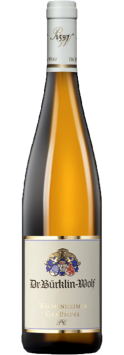
DR. BÜRKLIN-WOLF WACHENHEIMER GERÜMPEL PREMIER CRU RIESLING TROCKEN
The Gerümpel vineyard in the village of Wachenheim is one of Germany’s most famous first mentioned in documents dated 1429. Of the 13 ha in this site, Bürklin owns almost a full half of the vineyard, with 6.2ha. Gerümpel benefits from frequent warm winds, and sits on the border of Forst, where it abuts the famous Pechstein, this vineyard mixing the classic sandstone soils of Wachenheim with the volcanic basalt soils of Forst. After harvest and gentle pressing, the must is fermented in large oak casks and is aged on the lees until summer, prior to bottling.

DR. BÜRKLIN-WOLF WACHENHEIMER RECHBACHEL [MONOPOL] PREMIER CRU RIESLING TROCKEN
Rechbachel is 3 ha in size and is one of the top-ranked sites in Wachenheim. This is a monopole for the estate and lies on a south-facing slope, providing excellent ripening conditions, warming the red and yellow sandstone and gravel soil. A thick (four foot) layer of alluvial stone below the surface of the vineyard site helps to regulate water and provides mineral nutrition to the vines here. After gentle, whole cluster pressing, this Premier Cru is spontaneously fermented in large, old oak casks, followed by 10 months maturation casks before bottling in late summer.

DR. BÜRKLIN-WOLF WACHENHEIMER GOLDBÄCHEL PREMIER CRU RIESLING TROCKEN
Just below the monopole of Rechbächel is Goldbächel, another top-rated site in this village. Goldbächel is slightly larger than Rechbächel at 4.3 hectares. Bürklin-Wolf owns 3 of these hectares, in a south-facing hillside just below the border of Rechbächel. The south-facing slope ensures optimum exposure to the sun, warming the yellow and red sandstone gravel soil. After gentle, whole cluster pressing, this Premier Cru is spontaneously fermented in large, old oak casks, followed by 10 months maturation casks before bottling in late summer

DR. BÜRKLIN-WOLF REITERPFAD GRAND CRU RIESLING TROCKEN
The name of the Reiterpfad (Rider’s path) dates back to Roman times, a crossroads of two roads that made this vineyard important. Located in the village of Ruppertsberg, the soil in the Reiterpfad is sandy loam with layered sandstone and limestone. After gentle, whole cluster pressing, spontaneous fermentation is carried out in large, old oak casks (50%) and stainless steel (50%). After fermentation, the wine is aged on the lees until June, and bottled in mid-summer.

DR. BÜRKLIN-WOLF GAISBÖHL [MONOPOL] GRAND CRU RIESLING TROCKEN GROSSE LAGE
The Dr. Bürklin-Wolf estate is the sole (monopole) owner of this top-rated site in Ruppertsberg, which has a total area of 8 ha, of which only 5.2 ha are classified as a G.C. site. The origin of this site goes back to the late medieval era and it was classified as a First Growth in the Royal Bavarian Site Classification. It is located at the foot of the Mittelhaardt mountains, and benefits from a temperate microclimate. Deposits of gravel in terraces with layers of clay in the soil provide the Gaisböhl wine with its texture, body, and elegant acidity, the colored sandstone ensures a very long maturation potential. Farmed biodynamically, certified Biodvin. Spontaneous fermentation in large, old oak casks, maturation in the, on the lees until June 2020, bottling in July 2020.

DR. BÜRKLIN-WOLF HOMMAGE À LUISE RIESLING
Like the Estate Riesling Trocken, the fruit comes almost entirely from the village of Wachenheim. The difference is about site; the fruit for the Estate Riesling comes from warmer, south-facing sites, mid-slope or lower, while the fruit for this wine comes from cooler vineyards, nearer to the forest. The wine is fermented in stainless steel before the temperature is lowered to maintain a small amount of residual sugar, generally 20-30 grams, depending on the vintage and the level of acidity. This is a crisp, lively Riesling that still carries the undeniable character of the Pfalz.




